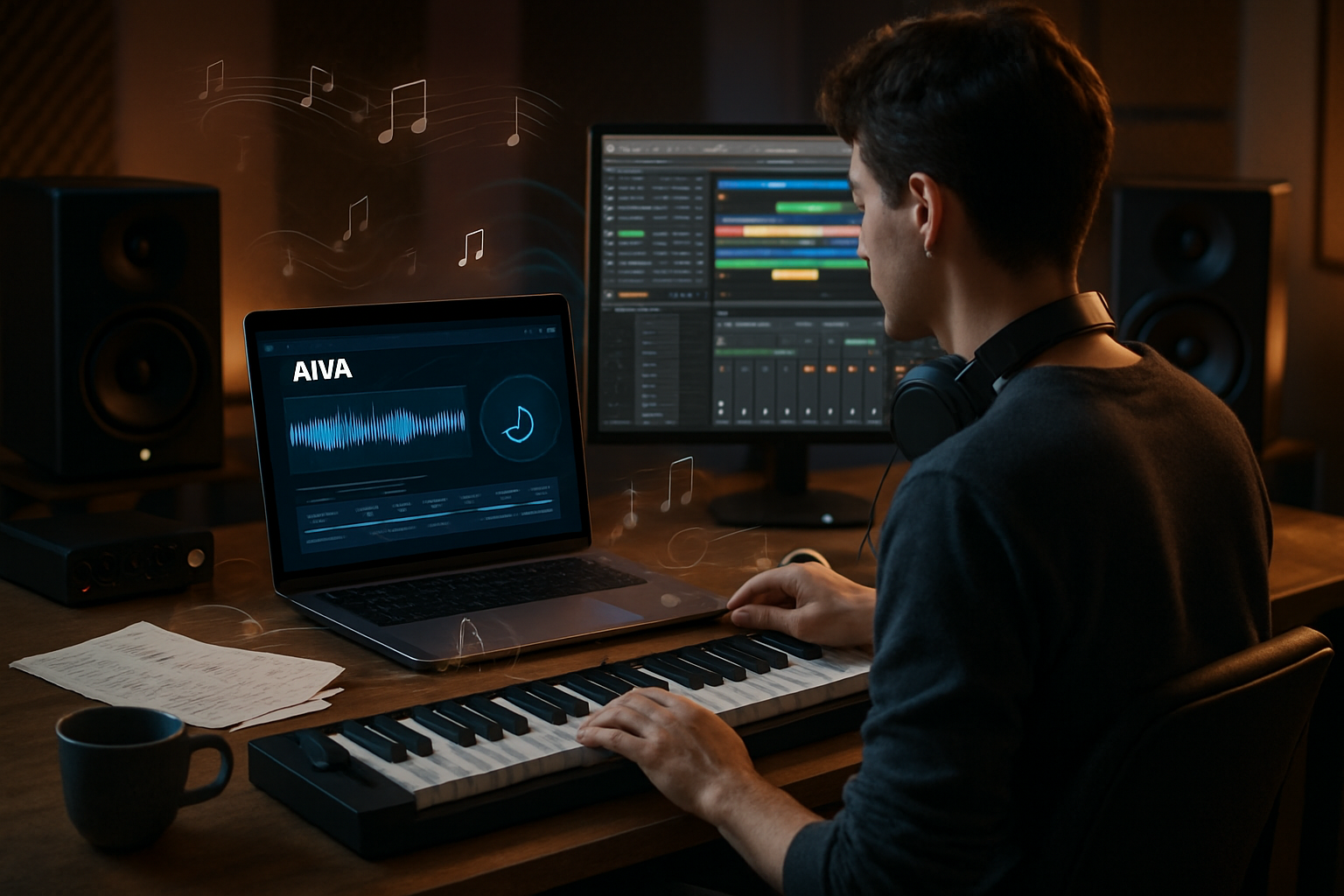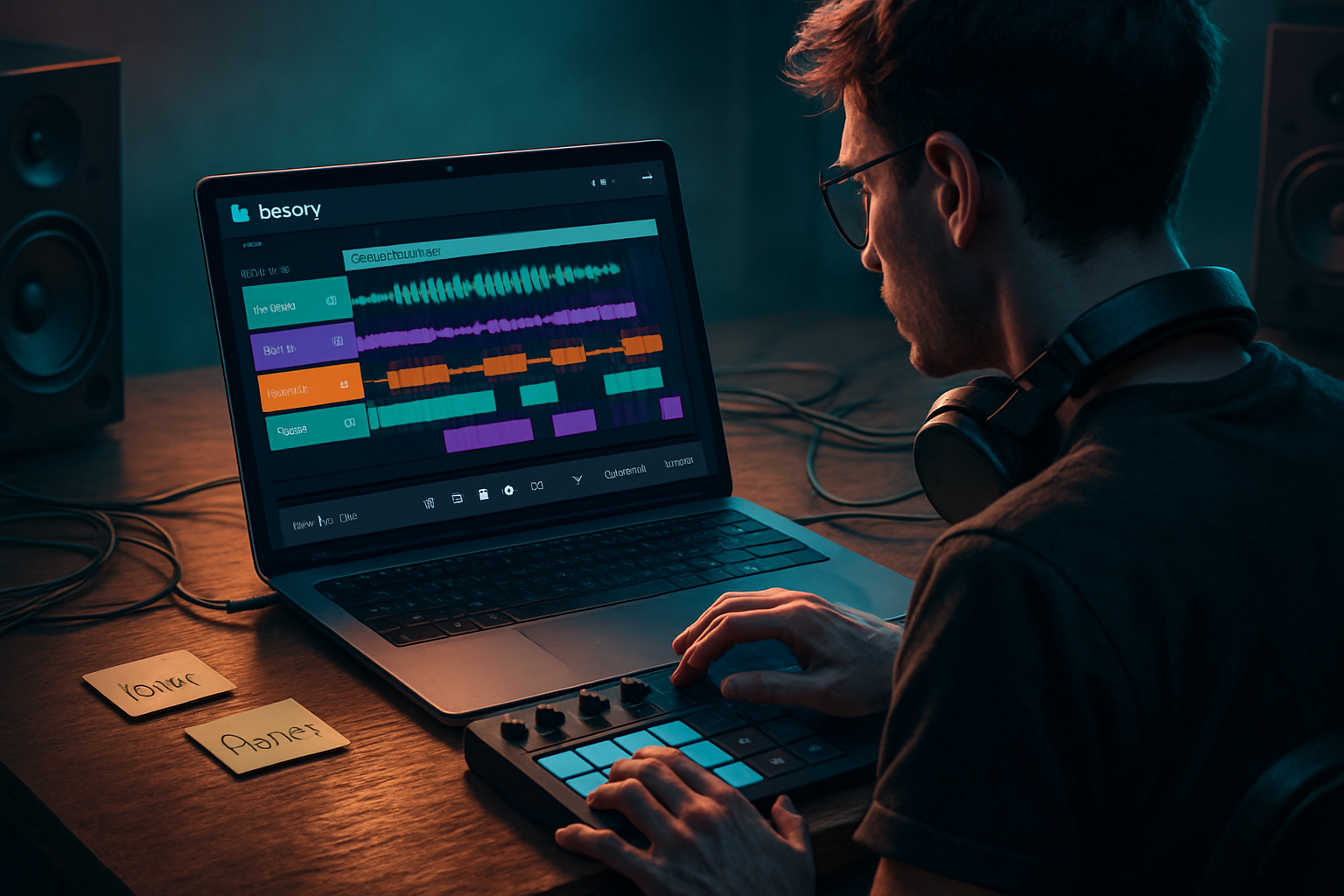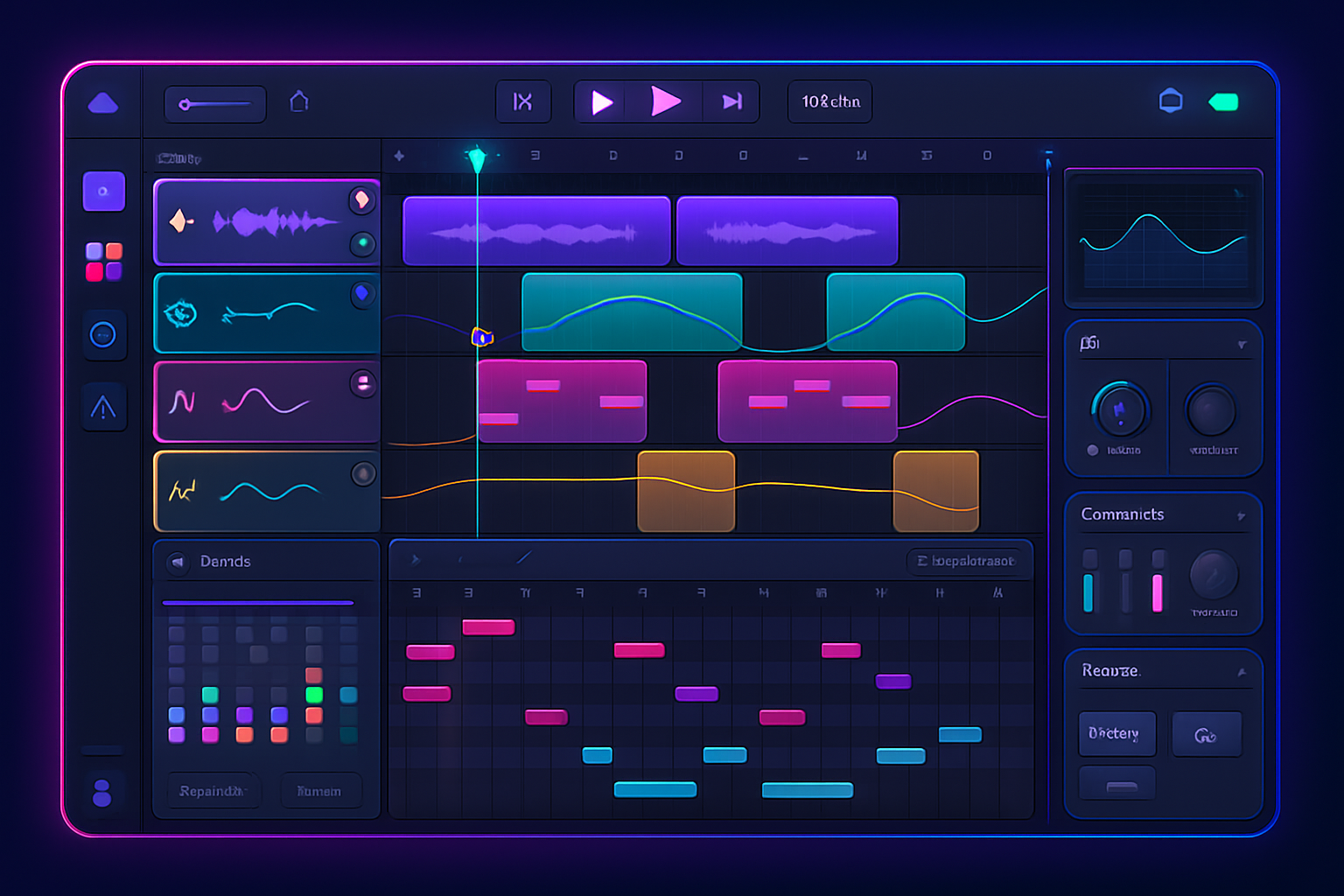· creativity · 5 min read
Unleashing Aiva: Top 10 Tips for Maximizing Your Music Composition Efficiency
Accelerate your music creation with 10 advanced, actionable strategies for Aiva - from tailored templates and iterative prompting to DAW integration and version control - designed to turn ideas into polished tracks faster.

What you’ll get - fast, repeatable, creative output
You’ll leave this article with ten concrete ways to cut friction in your Aiva workflow and turn rough ideas into finished sketches - faster, cleaner, and with more control. Expect templates you can reuse, prompt patterns that produce musical results predictably, and integration tricks that keep your DAW and collaborators humming along with you.
Aiva can be the engine. You stay in the driver’s seat.
1. Start every project with a one-line brief + data-driven reference
Tell Aiva exactly what you want. One crisp brief reduces guesswork and speeds iteration.
- Elements to include - desired tempo, key, mood (two words max), instrumentation, target duration, and a reference track link or timecode.
- Example brief - “120 BPM, A minor, cinematic tension, strings + piano, 1:30 sketch - reference: ‘Arrival’ cue at 0:00–1:30.”
Bring a reference track. Aiva and other models respond much better when they can match tangible features (structure, energy, instrumentation). Use loudness and max-energy moments as anchors.
Reference: Aiva official site for features and examples - https://www.aiva.ai
2. Build reusable project templates (structure + placeholders)
If you write repeatedly for the same formats - trailers, ad beds, podcast themes - create templates that include:
- Track skeleton (Intro, Build, Drop, Outro) with timings.
- Instrument groups and mix-busses (Strings Bus, Rhythm Bus, FX Bus).
- Placeholder MIDI clips labeled with function (e.g., “Motif A – call,” “Motif A – response”).
Templates save minutes that add up to hours. Open a template, hit generate, then edit. Fast.
3. Configure instrument and articulations presets for speed
Aiva can output instrumentation choices, but the specific sound matters. Pre-assign instrument patches for your common palettes:
- Orchestral - Solo violin (legato), Brass (fff), Strings (sustain), Low strings (pizz).
- Electronic - Analog lead, Warm pad, Sub-bass.
Map these consistently in both Aiva and your DAW so exported MIDI slots drop into the right channel with the right articulations.
4. Iterate with micro-prompts, not long rewrites
Big rewrites waste time. Instead, use small, focused prompts to refine:
- “Keep bars 1–8, reharmonize bars 9–16 to a ii–V–I.”
- “Make motif on beat 1 syncopated and add staccato on beats 2–3.”
Use temperature/creativity parameters conservatively when you want consistency. Higher values for exploration, lower for polished repeats.
Example micro-prompt block:
1) Generate base motif: 8 bars, 4/4, 90 BPM, piano lead.
2) Variation: Keep motif; change harmony to Em–C–G–D and add light hi-hat on off-beats.
3) Orchestration: Move melody to solo violin; add warm pad under bars 5–8.5. Use Aiva’s suggestions as seeds - combine human edits and AI recomposition
Treat AI output as modular: export MIDI, sculpt in your DAW, then re-import or resend the modified MIDI to Aiva for re-orchestration or new variations. The feedback loop is powerful:
- Humanize dynamics and timing in DAW.
- Ask Aiva to rescore the human-adjusted MIDI for new instrumentation or complexity.
This keeps creative control while leveraging AI’s pattern generation.
6. Integrate tightly with your DAW and MIDI pipeline
Export stems and MIDI early and often.
- Export MIDI for melodic/harmonic tracks so you can swap patches instantly in the DAW. MIDI is the single most flexible export format. See MIDI standards: https://www.midi.org
- Use dedicated buses for Aiva-generated groups so you can apply global processing quickly (e.g., send all strings to a single reverb bus).
Automation tip: Create an import macro that assigns incoming MIDI to named tracks and loads your default plugins.
7. Automate arrangement chores with macros and rules
Simple macros speed repetitive arrangement tasks:
- Macro to duplicate a motif and invert it every 16 bars.
- Macro to generate a 4-bar transitional rise (automation + filtered noise + riser sample).
Combine Aiva’s compositional output with DAW macros to automate mechanical steps so you can focus on musical decisions.
8. Lock in musical constraints to preserve style and reduce trial/error
If you need a specific harmonic or voice-leading behavior, enforce constraints early:
- Chord palette - limit to I–vi–IV–V for pop, or i–VI–III–VII for a darker modal feel.
- Voice-leading rules - no leaps > octave in inner voices; keep soprano lines stepwise when required.
Providing constraints reduces generation variance and produces usable drafts faster.
Reference for music theory basics: https://www.musictheory.net
9. Export stems, check loudness, and prepare simple masters early
Treat a sketch like a deliverable to avoid late-stage surprises.
- Export stems (melody, harmony, drums, FX) so collaborators and mix engineers can work without the Aiva project.
- Check loudness targets early. If delivering for streaming or sync, keep LUFS targets in mind and verify with metering tools. (Standards reference - EBU R128 / loudness principles.)
Early stem export lets you test mix decisions and save iterations that would otherwise be lost.
10. Version, tag, and automate metadata for collaboration and licensing
A structured versioning system prevents confusion and lost creative choices.
- Filenames - projectname_v01_motifA_date.
- Tag metadata - tempo, key, mood, reference track, license (if applicable).
- Use cloud storage with version history or simple Git-like versioning for MIDI and project files.
If you intend to license or sell cues, include composer credits and usage notes in the metadata immediately. This makes sync-ready delivery much faster.
Bonus: Prompt patterns that work
Here are three short, reusable prompt patterns you can adapt:
- Foundational sketch - “8-bar piano motif, 85 BPM, C minor, melancholic, simple left-hand arpeggio, memorable hook.”
- Orchestral uplift - “60–90 second cue. Start minimal (solo cello), build with strings & brass at bar 40, climax with full orchestra. Emphasize rising 5ths.”
- Electronic hybrid bed - “90 BPM, four-on-the-floor kick, warm analog pad, rhythmic pluck motif, cinematic transitions at bars 16 and 32.”
Use these as starting points and apply the micro-prompting method from tip #4.
Quick workflows for common goals
- Fast sketch to DAW - brief → generate 8–16 bar motifs → export MIDI → assign patches in DAW → export stems.
- Client-ready cue - template (structure) → generate sections → human-edit motifs → orchestration pass with Aiva → stems → loudness check → metadata.
Final thought (your biggest efficiency lever)
Automate the routine and keep decision-making human. The real speed gain isn’t from letting Aiva write everything. It’s from designing a repeatable, constrained process where Aiva handles the heavy generative work and you oversee creative judgment. When you pair reliable templates, micro-prompts, and tight DAW integration, your output quality rises - and your time-to-first-draft collapses.


